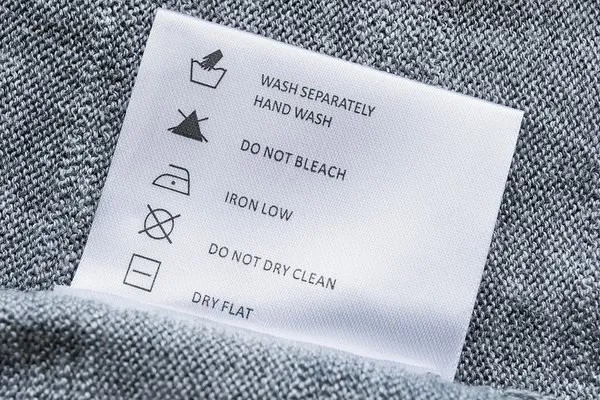Care environments like hospitals, nursing homes, and care centers need clear and durable clothing labels. These labels help staff wash, store, and return clothes to the right person. As a textile engineer and fashion designer with experience in manufacturing and labeling, I will explain the types of clothing labelling systems and help you find the best one for care use.
Why Care Environments Need Strong Labelling Systems
In care facilities, clothes often go through frequent washes. Staff must identify clothes quickly and return them without mistakes. Labels must stay attached and readable through heavy use.
Key needs for care environments:
- Clear Identification: Each label must show the wearer’s name or ID.
- Wash Resistance: Labels must survive high temperatures and chemicals.
- Ease of Use: Staff must attach and read labels with little effort.
Poor labels can cause delays, mix-ups, and stress. That’s why choosing the right system matters.
Selecting an appropriate clothing labelling system is crucial for care homes and educational institutions. Traditional methods include:
- Sew-in Labels: Durable but time- Disadvantagesuming to apply and may cause skin irritation.
- Iron-on Labels: Easier to apply but prone to peeling after multiple washes.
- Marker Pens: Quick but often fade over time and can bleed onto fabric.
- Adhesive Stickers: Convenient but typically not durable in wash cycles.
Fixxon’s button labelling system addresses the shortcomings of these traditional methods. The laser-etched buttons are designed to endure rigorous laundering without fading or detaching. Their smooth, skin-friendly design ensures comfort for the wearer, and the application process is both quick and straightforward.
Additionally, the system’s reusability and colour-coding enhance operational efficiency, making it a cost-effective and practical solution for institutions.
Common Clothing Labelling Systems
There are a few main types of labels used in care environments. Each has Advantages and Disadvantages.
Iron-On Labels
Iron-on labels are heat-activated and attach with a hot iron.
Advantages:
- Easy to apply at home or in care facilities.
- Permanent once attached.
- Affordable in bulk.
Disadvantages:
- May peel off under high heat or heavy washing.
- Can be hard to remove or replace.
Use Case: Best for small care homes with limited laundry pressure.
Sew-On Labels
Sew-on labels are stitched into clothing with a needle and thread.
Advantages:
- Very strong hold.
- Survive industrial wash cycles.
- Hard to remove by accident.
Disadvantages:
- Takes more time to attach.
- Needs sewing skills or tools.
Use Case: Ideal for large care homes or hospitals using industrial laundry.
Stick-On Labels
Stick-on labels use pressure-sensitive adhesive.
Advantages:
- Very fast to apply.
- No heat or tools needed.
Disadvantages:
- Not durable in wash cycles.
- Can fall off after several washes.
Use Case: Good for short-term care or labeling non-washable items.
Printed Name Tapes
These are rolls of fabric tape printed with names, often used with heat presses.
Advantages:
- Made for mass use in care centers.
- Heat-set for lasting hold.
- Easy to read large print.
Disadvantages:
- Requires label printer or supplier.
- Not for small-scale users.
Use Case: Suitable for hospitals and large laundry operations.
Best Practices in Clothing Labelling for Care Use
Based on industry trends and my experience, here are practices that improve label use in care:
Use High-Contrast Text
Labels should have dark text on light backgrounds or vice versa. This helps quick reading, even in low light.
Choose Heat-Resistant Materials
Use polyester or nylon labels with strong adhesives or thread. Avoid cotton labels as they wear out fast.
Print Names Clearly
Use large, bold fonts. Avoid cursive or decorative fonts. Include first name, last name, and room or ID if possible.
Keep Labels in the Same Spot
Attach labels in the same spot on each garment — often the neck or waistband. This saves time for staff.
Comparing Labelling Systems: Performance Table
| Label Type | Wash Durability | Ease of Use | Cost | Best For |
| Iron-On | Medium | Easy | Low | Small care centers |
| Sew-On | High | Medium | Low | Hospitals |
| Stick-On | Low | High | Low | Short-term stays |
| Name Tapes | Very High | Medium | Medium | Large laundry services |
Trends in Clothing Labels for Care Environments
As textile technology grows, new solutions appear. These include:
RFID Labels
RFID (Radio-Frequency Identification) labels use a chip to track clothes. Staff can scan garments for fast sorting.
Advantages:
- Saves time.
- Cuts labeling errors.
Disadvantages:
- Expensive to set up.
- Needs special readers.
H3: Heat Transfer Labels
These labels use ink fused into the fabric. They don’t peel off or fade easily.
Advantages:
- Flat, soft feel.
- Lasts many washes.
Disadvantages:
- Needs a heat press.
- Hard to replace.
How to Choose the Best Labelling System
To pick the right system, ask these questions:
- How often are clothes washed?
- How many clothes need labels?
- Do we need easy removal or long-term hold?
- Do we have sewing or printing tools?
If your center handles many clothes daily, sew-on or name tapes work best. For short stays, stick-on may be enough.
Final Thoughts
Clothing labelling systems for care depends on your needs. Sew-on and name tapes offer strong performance for most care settings. For smaller setups, iron-on labels are easy to use. Stick-on is only good for light use. Technology like RFID may help large facilities improve speed and tracking.
Use clear, durable, and simple labels. This helps staff work faster and gives better care to residents. Choosing the right label system makes the job easier for everyone.
